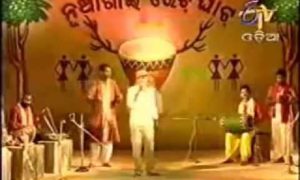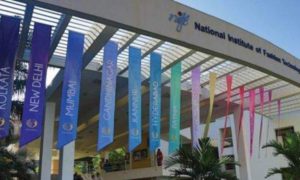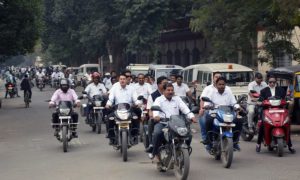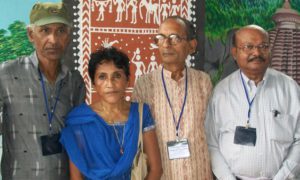httpvh://www.youtube.com/watch?v=3aTGCaZKokw
httpvh://www.youtube.com/watch?v=Z2Cz9eRWFbU
httpvh://www.youtube.com/watch?v=SQzOuslS86o
httpvh://www.youtube.com/watch?v=P49VN-PBgMY
Sambalpur, Aug. 8 2005: An Orissan tribal dance has evolved to gain popularity throughout the world, although it has yet to be accepted as a profession. Besides a vibrant culture, dance and music are also the other glorious aspects of Orissan art form. Sambalpuri dance ‘ may be it Dalkhai or Rasrkeli ‘ comprises one of the most exquisite forms of aesthetic expression for both men and women.
‘Among many a folk dances of the state, Sambalpuri dance has emerged as one of the most popular dance forms both here and around the world,’ said Murari Prasad Mishra. Mishra is the working president of Sambalpur Kala Parishad. The Sambalpur Kala Parishad was established in 1956 for the cause of folk art and dance in western Orissa.
Besides, an inborn inclination for folk arts and music, Mishra is also one of the leading advocates of the state, and the former minister of Orissa having unmatchable contribution for the cultural revolution in the entire state. Mishra is one among the few to bring Sambalpuri dance to its present form through a series of research. ‘We have brought the dance to a new level through the Sambalpur Kala Parishad,’ said Mishra.
The people of rural Sambalpur, particularly those living in the forests, used to perform the dance open air on a moonlit night. It was to soothe their weary nerves, tired after a day of manual work. Women danced as well as particularly on Bhaijuintia (Day of Durga Astami during Dussera in Aswina) and Sulka Ekadashi (Eleventh day of the bright fortnight). Both women and Bhadra also performed Dalkhai and Karma dances for the wellbeing of their brothers and family members. But in later stages, such dances underwent a series of changes. ‘The present Sambalpuri dance form is a refined state of the original,’ Mishra said. With time, Sambalpuri dance has become more diverse with innovative tunes, musical rhythms and movement of the body.
While retaining its traditional musical instruments, a modern touch has been made to the dress . Sambalpuri dance Nrutya Gurus (teachers) did their best to give it a new look, added Mitra. Ranjit Nag (64), a dance teacher of the Kala Parishad expresses pleasure that the folk dance of the tribals has been well acclaimed in Russia, USA, Indonesia, Japan, Thailand and so many other foreign countries.
‘Devotion to different tribal Goddesses is the main theme behind Sambalpuri dance, though people take it mostly as entertainment,’ Nag added. The dance used to be confined to tribals and other backward castes in the district. But today, higher castes have expressed an immense interest to learn it and they have excelled. But no one has taken it as a profession yet.
Currently, it is mainly a group of girls that gets disrupted due to the marriage of one the members . Now some ‘solo-dancers’ have emerged as Sambalpuri dancers. ‘But that is not Sambalpuri dance in its truest sense,’ clarified Nag.
‘I take pleasure in performing as a solo dancer,’ said dancer Minakshi Raut. According to her audience, Minakshi’s performance has gained popularity.










